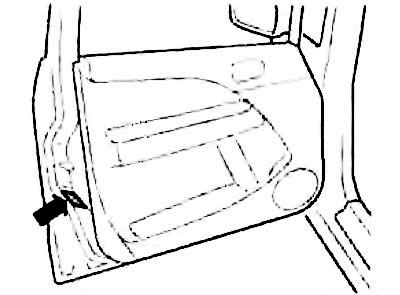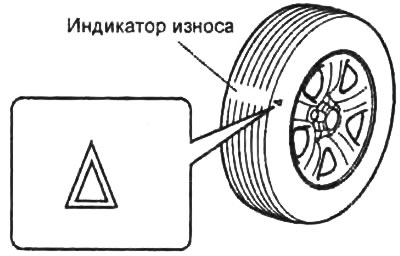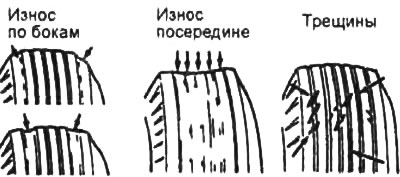
Note:
- The lower the tread height, the greater the risk of tire slip. The performance of snow tires is significantly reduced if the tread is worn down to a height of less than 4 mm.
- Incorrect tire pressure can shorten tire life and make driving less safe.
- Underinflation leads to excessive tire wear, an increased chance of punctures from overheated tires, poor handling and increased fuel consumption.
- If the tire pressure is very low, the wheel may be deformed and/or the tire may have come loose.
- High tire pressure results in poor comfort, handling problems, and increased wear on the center tread of the tire tread.
2. Check pressure only when tires are cold. If the car has been parked for at least three hours, the pressure gauge reading will be correct.
Attention:
- Always use a manometer. The appearance of a tire can be misleading.
- Be sure to replace the tire valve cap as dirt and moisture can get into the valve and cause air leakage.
3. Check tire tread depth. If the tread depth is less than the limit, the tire must be replaced.
- Limit value - 1.6 mm
Note: when the tread depth is reduced to 1.6 mm or less, the wear limit stripes appear on the tire (wear indicator).

4. Visual check of a condition of the tire.
A) The reason for the rapid wear of the tread on the sides or in the middle of the tread or the appearance of cracks in the tread is low tire pressure or non-compliance with the regulated terms / mileage of wheel rotation.
b) The cause of increased wear on one side of the tread is a violation of the camber angle.

V) The reason for the appearance of the comb edge of the tread tracks is incorrect wheel alignment.

G) The reason for the appearance of severe wear in the form of spots ("bald spots") on the tread is the unbalance of the wheel.
d) Cause of serrated wear on the side (as "scallops") is non-compliance with the rules for rearranging the wheels, increased wear or violation of the adjustment of the suspension units.
